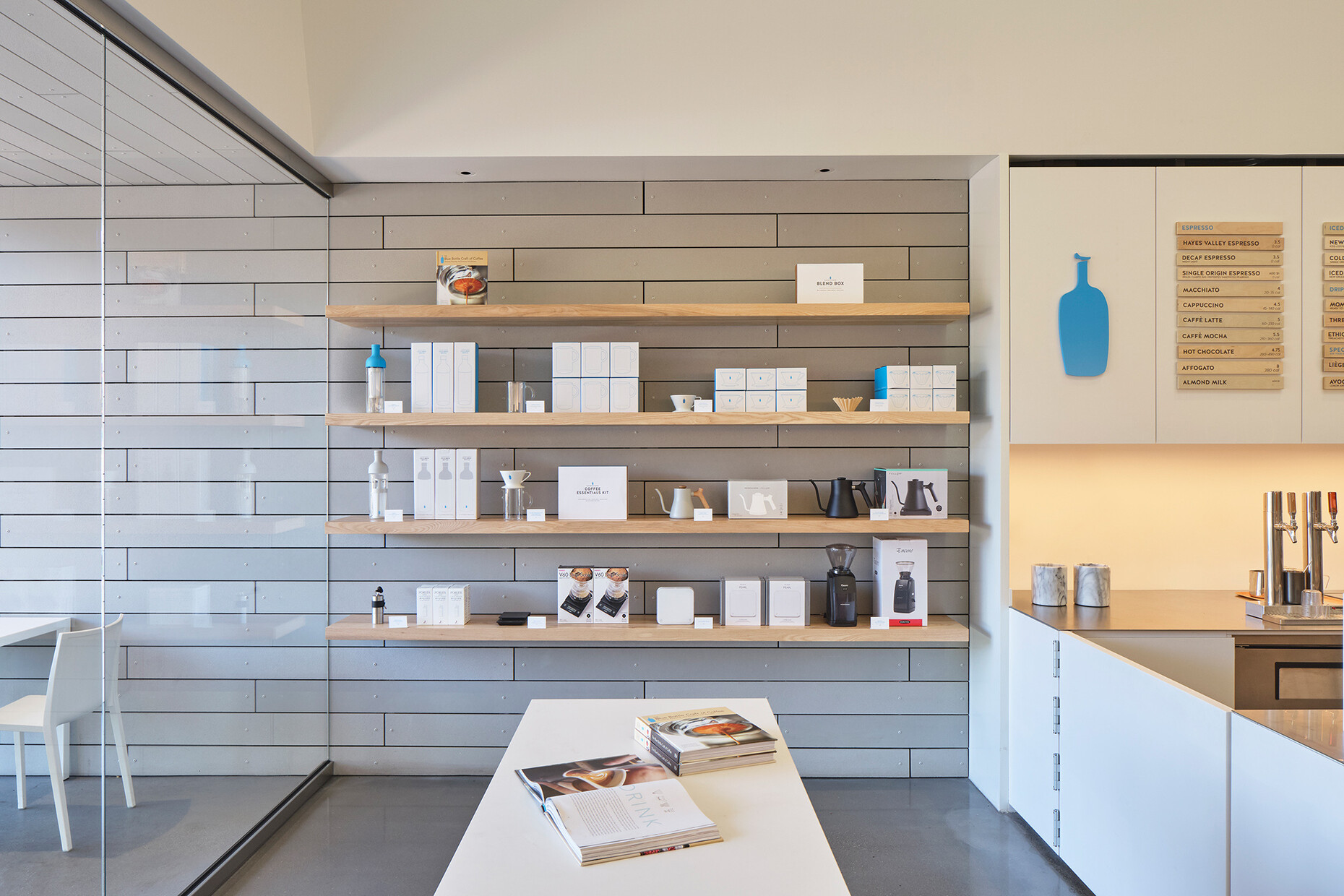Place of exchange
"Design has always been an important part of our brand identity and part of what we attribute our success to," says Lukas Bruggemann, head of café development at American coffee house chain Blue Bottle. This is evident, among other things, in the Blue Bottle branch in the heart of Palo Alto, which was completed in 2019. There, American architecture firm Bohlin Cywinski Jackson has transformed a formerly dark retail space in Stanford Shopping City into a light-filled venue. Rieder's "öko skin" was used for both the interior and exterior, a facade cladding made of fiberglass concrete in lath format, the production of which consumes only a small amount of fossil primary energy. The new café impresses with its open spatial concept and was awarded the AIA San Francisco Design Award 2020 in the interior design category.
Blue Bottle now operates a total of 99 cafés, not only in the USA but also in Japan, China and South Korea. Despite the global expanse, the company's concept is that the respective branches enter into a dialog with the location – whether in New York, Seoul, Tokyo or Palo Alto. This is achieved, among other things, through a well thought-out choice of materials. That's why the typical wall cladding made of slats is just as characteristic of the interior design as the specifically designed seating, which varies according to location and size. This creates open and light-flooded spaces in which coffee preparation is celebrated in public.
Accordingly, it is important to the operators that there is an interlocking of indoor and outdoor space. However, this was anything but easy at the Blue Bottle Café in Palo Alto due to the existing room geometry. Bohlin Cywinski Jackson therefore decided to transform the narrow, dark and high premises into a kind of coffee cathedral with precisely placed skylights. For the large shop window, which conveys a reference to the outdoors and allows glimpses of the café, they designed a sculptural folded entrance portal that guides guests inside. The horizontal battens "öko skin" from Rieder in the color "ivory" and the surfaces "ferro", "ferro light" and "matt", which were used for the cladding of the façade and interior walls, played a special role. It interlocks the interior with the exterior, brings light into the café and thus makes the space appear larger.
The individual slats of "öko skin" are available in widths of 70 to 302 millimeters and in lengths of 700 to 2500 millimeters. Rieder has a total of four different color worlds in shades of gray, beige, red and brown in its range, which are based on the diverse colors of nature. In the case of the Blue Bottle Café in Palo Alto, "öko skin" provides a relaxed atmosphere due to its light and muted colors, which is in harmony with the open space concept and contributes decisively to creating a minimalist oasis.
Rieder makes an active contribution to the energy transition due to the continuous development of its products and production processes. For example, waste residues are limited by reusing offcuts or avoided altogether by replacing the raw material. For example, special tools are used in production to reduce waste. In addition, residual materials from production can be used as filling material for noise barriers or as substructures. All the company's products have always been free of crystalline silica or other ingredients that are hazardous to health. Last but not least, Rieder's products impress with their thermal values, which guarantee absolute safety and fire resistance as well as a service life of more than 50 years. Their maintenance requirements are low, as glass fiber reinforced concrete does not need to be sanded or painted. Therefore, as in the case of the Blue Bottle Café, they are particularly suitable for connecting indoor and outdoor spaces, thus creating places of exchange flooded with light. (ar)




































